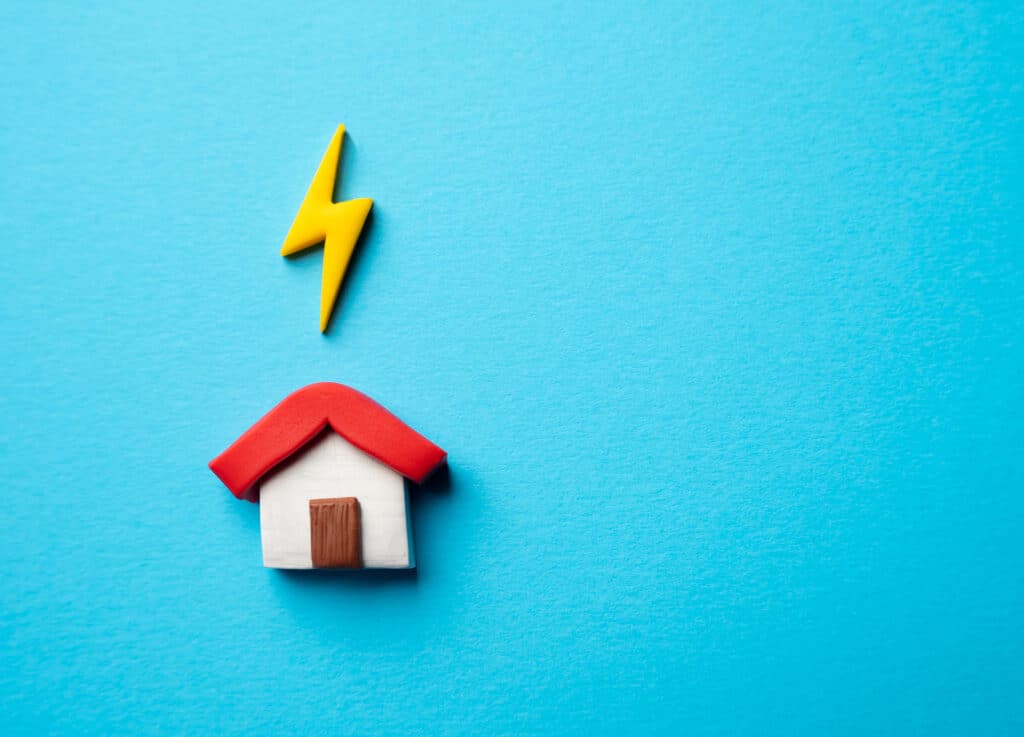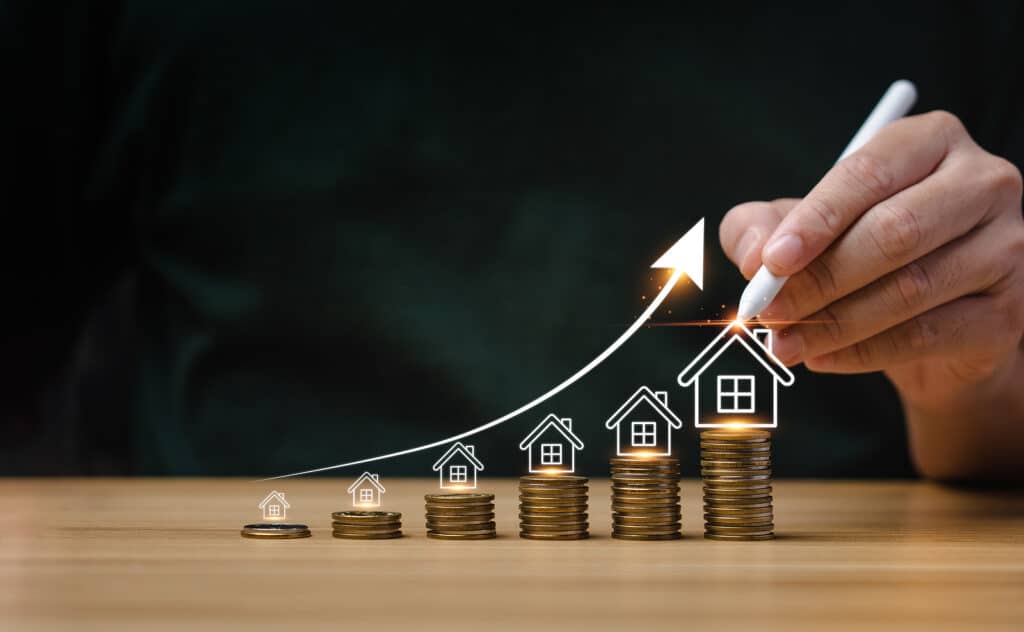Build an Energy Efficient House
As I embark on the journey of building a new home, I've come to realize that prioritizing energy efficiency goes far beyond just following a trend. With climate change impacting our world and resources becoming scarcer, I'm determined to take innovative strides to not only reduce energy consumption but also lower my future utility bills while ensuring a comfortable living space.
Exploring cutting-edge techniques and advanced materials, I'm eager to construct a home that aligns with my values of sustainability and responsible stewardship. By embracing energy efficiency in this endeavor, I'm not only contributing to a healthier planet but also setting the stage for long-term savings and a more sustainable future for myself and generations to come.
Understanding Energy Efficiency in Housing
Energy efficiency entails the astute management and utilization of energy reservoirs, aiming to curtail wastage while optimizing productivity. Within the realm of housing, the concept of energy efficiency translates into the creation of homes that are meticulously crafted to demand minimal energy inputs while still offering a haven of comfort for its inhabitants. This dual-pronged approach not only contributes to the mitigation of ecological burdens by diminishing carbon footprints but also bestows enduring economic benefits upon homeowners in the form of reduced energy bills over time.
To manifest this ideal, homeowners and architects alike harness an array of strategies that collectively culminate in a noteworthy reduction of energy consumption without imposing any trade-offs on the occupants' comfort or the aesthetic appeal of the abode. These strategies encompass an intricate tapestry of innovations that span from the meticulous selection of construction materials with high thermal insulation properties to the integration of cutting-edge, energy-efficient house design appliances and lighting systems. Additionally, the judicious placement of windows and the implementation of passive solar energy efficient house design principles can harness natural light and heat to alleviate the need for excessive artificial lighting or heating.

Why is Building an Energy Efficient House Important?
Building an energy efficient house holds paramount importance in our contemporary world for a multitude of interconnected reasons. The convergence of environmental concerns, economic implications, and societal well-being underscores the criticality of adopting energy efficient practices in residential construction.
First and foremost, the global imperative to address climate change and minimize our carbon footprint makes energy efficient housing a pivotal contributor. Traditional homes often guzzle energy from non-renewable sources, releasing substantial amounts of greenhouse gases into the atmosphere. By contrast, energy efficient houses are meticulously designed to consume considerably less energy, thereby reducing emissions and mitigating the adverse impacts of climate change.
Moreover, the financial implications cannot be understated. While the upfront costs of integrating energy efficient technologies and design elements might appear higher, the long-term economic gains are substantial. Energy-efficient homes boast significantly reduced utility bills, as their design elements, insulation, appliances, and lighting systems are optimized to minimize energy consumption. Over time, these cumulative savings can offset the initial investment, resulting in tangible economic benefits for homeowners.
The impact also extends to the broader community and national level. energy-efficient house project lessens the strain on existing energy infrastructure, reducing the risk of power shortages and contributing to a more stable and resilient energy grid. This, in turn, aids in avoiding potential energy crises and empowers local communities to better manage their energy resources.
Furthermore, constructing energy efficient houses fosters innovation and drives job creation. The development, installation, and maintenance of energy efficient technologies create employment opportunities in various sectors, ranging from construction and architecture to renewable energy and manufacturing.
Lastly, the occupants' quality of life is significantly enhanced in energy efficient homes. These residences prioritize comfort through effective insulation, ventilation, and temperature regulation, creating a healthier and more pleasant living environment. Reduced noise pollution, improved indoor air quality, and consistent thermal comfort contribute to the overall well-being of residents.
Benefits of Energy Efficient Homes
The advantages inherent in energy-efficient homes encompass a multitude of substantial benefits that resonate across various dimensions:
Economical Advantage through Lower Energy Bills
The concept of energy efficiency translates into tangible economic gains for homeowners. By embracing designs and technologies that curtail energy consumption, these homes grant residents the advantage of consistently lower utility bills. The symbiotic relationship between resourceful energy use and fiscal prudence is evident, leading to substantial and sustained cost savings over the long term.
Eco-Friendly Footprint and Carbon Mitigation
Energy-efficient dwellings extend a powerful hand to environmental stewardship. These homes function as catalysts for a diminished carbon footprint, aligning harmoniously with the imperative of sustainable living. The meticulous reduction in energy demand equates to fewer greenhouse gas emissions, fostering an environment that is healthier and more resilient against the threats of climate change.
Elevated Comfort Levels Through Thoughtful Design
The allure of energy-efficient homes is not solely confined to economic advantages. Rather, it is epitomized by the exceptional comfort they bestow upon their occupants. These dwellings prioritize the seamless integration of effective insulation, optimal ventilation, and intelligent technologies, culminating in an indoor environment that remains comfortable, regardless of the external elements. The equilibrium achieved by these most energy efficient house design elements ensures a haven of comfort year-round, nurturing an ambiance conducive to relaxation and well-being.
Real Estate Resonance: Amplified Resale Value
The real estate landscape is unequivocally influenced by the aura of energy efficiency. Homes that bear the imprints of energy-conscious designs and features are sought after with fervor. The demand for such properties not only stems from their operational frugality but also from their alignment with a sustainable future. Consequently, energy-efficient homes tend to wield a distinctive edge in the real estate market, often commanding higher resale values and enjoying increased desirability among potential buyers.
Healthier Living Spaces through Improved Well-being
The benefits of energy efficient house project extend beyond tangible metrics, touching the realms of health and well-being. Akin to nurturing ecosystems, these homes foster an indoor environment that is not only aesthetically pleasing but also conducive to health. Enhanced indoor air quality, coupled with consistent temperature regulation, forms an amalgam that positively influences the health and vitality of occupants, culminating in a living experience that transcends the ordinary.
Resilience in Extreme Conditions
Energy-efficient homes are better equipped to handle extreme weather conditions. Their well-designed insulation and ventilation systems help maintain stable indoor temperatures, ensuring comfort during both scorching summers and frigid winters. This resilience reduces the need for excessive heating or cooling, saving energy and bolstering the home's overall durability.
Reduced Strain on Energy Infrastructure
As more homes adopt energy-efficient practices, the strain on local and national energy grids diminishes. This reduction in energy demand helps mitigate the risk of power shortages during peak usage times, enhancing the overall stability and reliability of the energy infrastructure.
Noise Reduction
Energy-efficient homes often feature advanced insulation materials that double as effective noise barriers. This leads to quieter indoor environments, shielding residents from external noises and promoting tranquility within the home.
Government Incentives and Tax Benefits
Many governments offer incentives and tax breaks for homeowners who invest in energy-efficient upgrades. These incentives can take the form of rebates, tax credits, or grants, making energy-efficient home improvements more affordable and attractive.
Minimal Maintenance Costs:
Energy-efficient homes are typically designed with durable, high-quality materials and systems. This often translates to lower maintenance and repair costs over time, as these components are engineered to withstand wear and tear more effectively.
Techniques and Materials to Build an Energy Efficient House
Creating an energy efficient house involves a careful integration of various techniques and materials that work in harmony to optimize energy consumption. Below are some key techniques and materials commonly used to build energy-efficient homes:
Effective Insulation
Proper insulation minimizes heat transfer between the interior and exterior of the house. High-quality insulation materials such as fiberglass, cellulose, or spray foam are strategically applied in walls, roofs, and floors to maintain consistent indoor temperatures and reduce the need for excessive heating or cooling.
Energy-Efficient Windows and Doors
Windows and doors with advanced glazing technologies, such as low-emissivity (low-E) coatings and double or triple-pane glass, help to prevent heat loss in the winter and minimize heat gain in the summer. Additionally, well-sealed and insulated frames prevent drafts and contribute to overall energy efficiency.
Passive Solar Design
Incorporating passive solar principles involves positioning windows and thermal mass (such as concrete floors or stone walls) to harness natural sunlight and heat. This reduces the need for artificial lighting and heating, optimizing energy consumption throughout the day.
High-Efficiency Heating, Ventilation, and Air Conditioning (HVAC) Systems
Energy-efficient HVAC systems, such as heat pumps or geothermal systems, provide effective heating and cooling while consuming less energy. Proper ventilation systems ensure indoor air quality and minimize energy waste.
Energy-Efficient Appliances and Lighting
Choosing energy-efficient appliances (ENERGY STAR certified) and LED lighting fixtures significantly reduces electricity consumption. These appliances and lighting options use less energy to deliver the same level of performance.
Air Sealing and Proper Ventilation
Sealing gaps, cracks, and air leaks throughout the house prevents drafts and heat loss. Simultaneously, mechanical ventilation systems ensure a continuous supply of fresh air while expelling stale air, maintaining indoor air quality.
Reflective and Cool Roofing
Reflective or cool roofing materials, which reflect more sunlight and absorb less heat, help to reduce the cooling load on the house. This is especially beneficial in hot climates.

Innovative Ways to Achieve Energy Efficiency
Delving into the Ingenuity of Passive House Design Principles
The innovative philosophy of the Passive House design paradigm revolves around the meticulous orchestration of elements that harmoniously yield homes with exceptionally low energy demands for heating and cooling. At its core, this concept rests upon a foundation of meticulously crafted principles, each contributing to the holistic achievement of energy efficiency:
- Elevated Insulation Mastery: The cornerstone of this philosophy lies in the concept of super insulation. By embracing insulation materials of substantial thickness throughout the entirety of the building envelope, heat transfer is meticulously curtailed. This insulative prowess forms an impermeable barrier against the whims of external temperatures, bolstering the preservation of internal thermal comfort.
- The Art of Airtight Precision: The concept of airtight construction occupies a pivotal role in the Passive House narrative. Intricately engineered airtight seals, meticulously placed, stand as sentinels against the incursion of unwelcome drafts and the inadvertent leakage of precious heat. These seals safeguard the interior sanctuary against the capricious forces of nature, underpinning the preservation of energy-efficient equilibrium.
- The Symphony of Energy Recovery Ventilation: One of the crown jewels of Passive House methodology lies in the realm of energy recovery ventilation. A mechanical symphony is orchestrated wherein outgoing air surrenders its heat energy, fortuitously warming incoming fresh air. This elegant ballet of heat exchange significantly diminishes the energy prerequisite for the warming of fresh air, forging a symbiotic dance that ensures both comfort and efficiency.
Elevating Energy Efficiency Through High-Performance Insulation Endeavors
In the contemporary tableau of energy-efficient homes, the artistry of insulation assumes new heights through an array of modern materials. Spray foam, rigid foam, and cellulose emerge as the protagonists in this thermal narrative. Each material, meticulously chosen for its superior thermal resistance, meticulously curtails the passage of heat. The overarching effect is a veritable fortress of temperature stability, where the vicissitudes of external climate find little ingress.
Harmonizing Intelligent Glazing with Natural Illumination
The dance of illumination meets thermal conservation in the realm of energy-efficient windows. These windows stand adorned with low-emissivity (low-E) coatings and insulated frames that exquisitely choreograph the ballet of heat transfer. Simultaneously, the strategic placement of windows and the inclusion of skylights channel the splendor of natural light into the heart of the dwelling. A performance unfolds where energy-efficient windows serve as both guardians of thermal equilibrium and conductors of natural splendor, obviating the need for artificial lighting during daylight hours.
Crafting a Symphony of Efficiency Through Advanced HVAC Strategies
The aria of efficiency reaches crescendo within the realm of advanced heating, ventilation, and air conditioning (HVAC) systems. Geothermal heat pumps and mini-split systems emerge as virtuosos, harmoniously orchestrating energy consumption to deliver exquisite temperature control with minimal resource expenditure. Guided by the insights of smart thermostats that deftly adapt temperature settings to occupancy patterns, this symphony of systems attains a harmonious equilibrium between comfort and resource conservation.
The Fusion of Renewables: A Choreography of Sustainable Power
The grand finale of energy-efficient living unfurls through the integration of renewable energy sources, a crescendo of eco-conscious power generation. Solar panels bask in sunlight's embrace, while wind turbines sway in the kinetic poetry of breezes. This renewable rhapsody orchestrates clean electricity that punctuates the reliance on conventional grid power, bestowing economic savings and ecological merit.
Implementing Energy Efficiency: From Concept to Reality
Finding the Right Architect and Builder
The pivotal genesis of actualizing energy efficiency rests upon the discerning selection of architects and builders who traverse the landscape of energy-conscious design with acumen. Venturing into the realm of these professionals, seek those who bear the credentials of an esteemed lineage in the realm of green building practices, augmented by certifications that validate their prowess in the realm of energy efficiency.
Budgeting and Financing
The financial tapestry of energy-efficient construction, while occasionally adorned with higher initial investment, is woven with the golden threads of long-term savings that unfurl over time. The investment is not merely in bricks and mortar; it is a commitment to operational frugality.
As you embark on this journey, unfurl the pages of green financing options that often grace this chapter, securing your position in a realm where sustainable living and fiscal wisdom converge. Delve into the treasure troves of incentives specific to your geographic domain, for these beacons can illuminate the path to greater affordability and catalyze your energy-efficient aspirations.
Local Regulations and Permits
The labyrinthine passage from concept to energy-efficient reality is illuminated by the beacons of local building codes and regulations. These statutes, etched in the legalese of your region, outline the tenets and standards that underpin energy efficiency. As you march forward, arm yourself with the knowledge of these codes, for they are the architects of the blueprint that safeguards both the inhabitants and the environment. Embrace the potential offerings of your locale, as some regions extol the virtues of expedited permitting or other incentives that elevate the journey toward energy-efficient embodiment.
Where to Get Started: Resources and Tools
The Genesis of Precision: The Spectrum of Energy Modeling Software
At the heart of crafting an energy-efficient haven lies the arsenal of energy modeling software, each code and algorithm an artisan of precision. Dwell within the realms of EnergyPlus and REM/Rate, where architects and builders orchestrate the symphony of energy performance. These tools, akin to virtual laboratories, breathe life into simulations, offering an illuminated path for informed decisions during the design phase. The interplay of variables and data sparks ingenuity, while the algorithms map a tapestry of energy efficiency, demystifying complexities and elevating design choices to realms of calculated brilliance.
The Mark of Excellence: Green Building Certifications as Pillars of Wisdom
Certifications rise as beacons of guidance and benchmarks within the tapestry of energy-efficient construction. Among these illustrious guardians, LEED, or Leadership in Energy and Environmental Design, stands as an embodiment of meticulous sustainability standards. It unfurls the codex of ecological sensibility, igniting architects' and builders' journeys towards creating homes that embrace both efficiency and environmental reverence. The luminary presence of Passive House certification reverberates in a symphony that harmonizes design and energy efficiency, elevating it to a creed that resonates with both practitioners and inhabitants.
The Gathering of Minds: Professional Associations and the Wisdom of Workshops
Amid the landscape of energy-efficient construction, the compass points to professional associations and workshops as fonts of enlightenment. The U.S. Green Building Council (USGBC), a herald of green visions, beckons with the promise of insights and networking that transcend horizons. Within these gatherings, architects and builders forge connections, sharing tales of innovation and challenges surmounted, while imbibing insights that kindle the flames of future endeavors. Local green building associations unfold workshops that transcend the mundane, nurturing camaraderie and fostering a crucible of innovation. In these forums, the architects' blueprints are not confined to paper; they come alive through the narratives and experiences shared by peers.
Conclusion
As I venture deeper into the realm of building an energy-efficient home, my journey becomes an embodiment of purpose and responsibility. What began as a quest for reduced energy bills has evolved into a profound realization of the transformative potential that energy efficiency holds. It's more than constructing a house; it's a testament to my commitment to sustainability, a reflection of my dedication to a healthier planet.
With each step, whether it's embracing passive house design principles or integrating advanced HVAC systems, I'm not just building a home; I'm weaving a legacy of responsible living. As I engage with tools like energy modeling software and seek guidance from green building certifications, I'm part of a larger movement striving to create spaces that harmonize with the environment and prioritize a future that's not only comfortable but also sustainable.
This journey is a personal symphony that resonates with the collective efforts of like-minded individuals, architects, and builders, all striving to make a difference in the world. Through every choice I make, from material selection to renewable energy integration, I'm crafting more than just walls; I'm crafting a sanctuary of innovation, resilience, and hope for generations to come.

